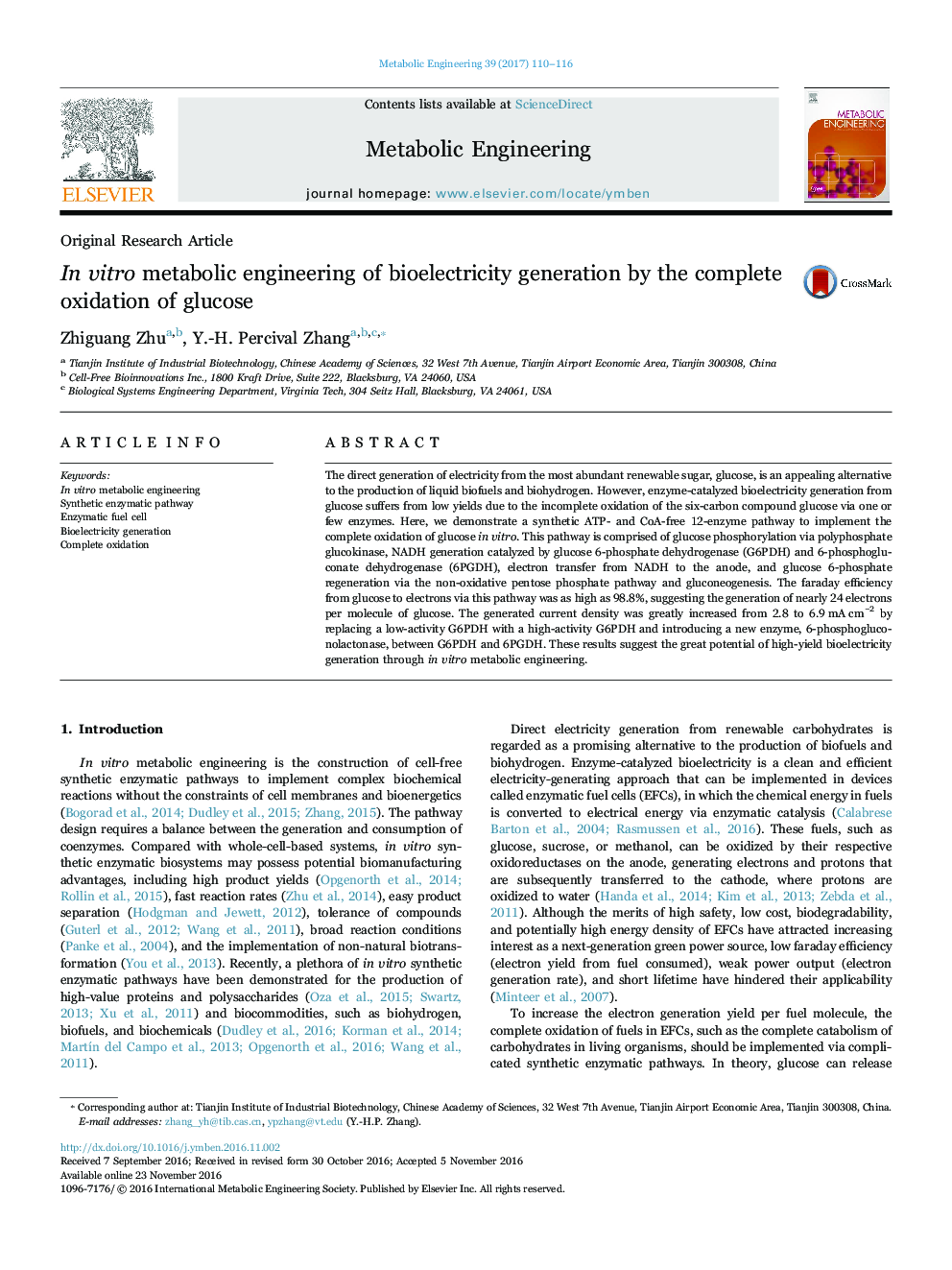| کد مقاله | کد نشریه | سال انتشار | مقاله انگلیسی | نسخه تمام متن |
|---|---|---|---|---|
| 6452785 | 1418339 | 2017 | 7 صفحه PDF | دانلود رایگان |

- A synthetic enzymatic pathway was designed to completely oxidize glucose.
- The conversion yield from glucose to electrons was as high as 98.8%.
- The current density was increased to 6.9Â mAÂ cmâ2 via pathway engineering.
The direct generation of electricity from the most abundant renewable sugar, glucose, is an appealing alternative to the production of liquid biofuels and biohydrogen. However, enzyme-catalyzed bioelectricity generation from glucose suffers from low yields due to the incomplete oxidation of the six-carbon compound glucose via one or few enzymes. Here, we demonstrate a synthetic ATP- and CoA-free 12-enzyme pathway to implement the complete oxidation of glucose in vitro. This pathway is comprised of glucose phosphorylation via polyphosphate glucokinase, NADH generation catalyzed by glucose 6-phosphate dehydrogenase (G6PDH) and 6-phosphogluconate dehydrogenase (6PGDH), electron transfer from NADH to the anode, and glucose 6-phosphate regeneration via the non-oxidative pentose phosphate pathway and gluconeogenesis. The faraday efficiency from glucose to electrons via this pathway was as high as 98.8%, suggesting the generation of nearly 24 electrons per molecule of glucose. The generated current density was greatly increased from 2.8 to 6.9Â mAÂ cmâ2 by replacing a low-activity G6PDH with a high-activity G6PDH and introducing a new enzyme, 6-phosphogluconolactonase, between G6PDH and 6PGDH. These results suggest the great potential of high-yield bioelectricity generation through in vitro metabolic engineering.
Journal: Metabolic Engineering - Volume 39, January 2017, Pages 110-116